Headlines and events archive
Displaying 501 - 550 of 1543
You may also find an archive of news published in the media which are related with the Instituto de Astrofísica de Andalucía - CSIC.
Pages

|
01/06/2017 - 12:30
Servicios Administrativos en el IAA La actividad científica e investigadora en el IAA, requiere el apoyo y soporte de gestión de las unidades de servicios administrativos. Estas se componen de los servicios económico-administrativos y los servicios generales (Biblioteca, Mantenimiento, Ordenanzas). Estas unidades gestionan los medios y recursos materiales, económicos y personales que el IAA tiene asignado. Se expondrá una visión general de los servicios, con la tareas... Fernado Bordons, Gerente del IAA |

|
08/06/2017 - 12:30
The Dynamic Universe: Adventures in Time Series Analysis Modern astrophysics has revealed a Universe alive with explosions great and small. It is an astonishingly active place, far different from the serene “clockwork Universe” previously envisioned. Our tour of this dynamic Universe includes the active Sun, extrasolar planets and the search for intelligent life on them, the highly active relativistic plasma that is the residue of a stellar explosion in the year 1054 AD, dramatic x-ray... Dr. Jeff Scargle |

|
09/05/2017 - 12:30
Blender 3D, el programa definitivo Blender es un potente programa multiplataforma que se distribuye libremente y es de código abierto. Entre sus aplicaciones más inmediatas está el modelado y la animación 3D, pero es un programa muy versátil que se puede usar para muchos otros propósitos. En esta charla presentaremos ejemplos de uso de Blender para la visualización de datos científicos y divulgación de la Ciencia; para la creación de diseños y piezas tridimensionales que pueden... Dr. Francisco M. Gómez Campos |

|
20/04/2017 - 12:30
Spatially resolved star formation history of CALIFA galaxies: Implications for galaxy formation One year after the final data release of the CALIFA survey, I will revise the results obtained from the analysis of the spatially resolved stellar population properties of galaxies and their impact on our knowledge on galaxy formation and their evolution. I will do special emphasis in the more recent results on the spatially resolved star formation histories of galaxies obtained for our group at the IAA. I will show, in my opinion, the... Prof. Rosa González Delgado |

|
06/04/2017 - 12:30
Fractal analysis in pulsating stars: what is and what we can learn from it I will describe the basic ideas of my line of research, concerning the develop of classification criteria and algorithms for the identification of delta Scuti, gamma Doradus and Solar-like pulsating stars, based on chaos analysis and multi-fractal analysis. In fact multi-fractal behaviour in light curves, which emerges at the onset of chaos, could be the fingerprint of the stochastic mechanism of modes excitation, due to an outer convective... Dr. Sebastiano de Franciscis |

|
27/04/2017 - 12:30
The large abundance discrepancy phenomenon in planetary nebulae The discrepancy between chemical abundances computed using optical recombination lines (ORLs) and collisionally excited lines (CELs) is a major unresolved problem in nebular astrophysics, with significant implications for the determination of chemical abundances throughout the Universe. In planetary nebulae (PNe), a common explanation of this discrepancy is that two different gas phases coexist: a hot component with standard metallicity, and a... Dr. Jorge García Rojas |

|
23/03/2017 - 12:30
Detection of gravitational waves from space: the LISA mission The idea of detecting gravitational waves from space has been under consideration for more than 25 years. In 2012, the advisory bodies of ESA decided that the next-but-one "large mission", L3, will be devoted to this. Launch is scheduled for 2034. In 2015, the Director of Science of ESA appointed an external committee, with Michael Perryman as chair, to advise on the technical feasibility of the LISA mission, and the technology development... Prof. M. Perryman |

|
16/03/2017 - 12:30
Space astrometry: the Hipparcos and Gaia missions The talk will provide a short historical context and describe the scientific motivation for these missions, outline the essential experimental principles which underpin their measurements, and give an overview of the science objectives, including Gaia's expected yield of many thousands of astrometrically-detected exoplanets. Prof. M. Perryman |

|
30/03/2017 - 12:30
Star formation in nearby early-type galaxies It is well known that there is little star formation activity in early-type galaxies. By cross-matching SDSS DR 7 with RC3 catalog and visually checking the SDSS images, we derive a sample of 583 S0 galaxies with the central spectrophotometric information. In order to separate nebular emission lines from the underlying stellar contribution, we fit the stellar population model to the SDSS spectra of these S0 galaxies. According to the BPT diagram... Dr. Qiusheng Gu |

|
02/03/2017 - 12:00
Supermassive Black Holes: Impact on Galaxy Formation and Evolution Supermassive black holes, weighing between millions to billions times the mass of the Sun, are believed to power quasars and other energetic activity in the centers of galaxies. With the help of advanced telescopes from the ground and in space, operating across the electromagnetic spectrum, astronomers have now discovered that supermassive black holes not only exist, but that they are very common and play a critical role in the formation and... Prof. Luis Ho |

|
09/02/2017
11 February. International day of women and girls in science The United Nations General Assembly adopted a resolution declaring 11 February as the International Day of Women and Girls in Science. |

|
09/03/2017 - 12:30
Recovering information beyond the power spectrum of large-scale structure Future galaxy surveys of the large-scale structure in the Universe will provide a wealth of new data and make it possible to use higher-order statistics beyond the power spectrum, such as the bispectrum (or 3-point correlation function), to constrain galaxy clustering, the standard LCDM cosmology, and many of its possible extensions. However, it may be possible and preferable to use recently devised alternative statistics, such as the line... Dr. Joyce Byun |

|
23/02/2017 - 12:30
The impact of environment and confusion of the observed HI galaxy population The HI galaxy mass function represents a fundamental component of our understanding of the gas content of galaxies. How its form varies throughout the local Universe and as a function of redshift is key to developing a complete picture of galaxy evolution. We use the ALFALFA 70% catalogue, the largest uniform catalogue of extragalactic HI sources to date, to explore the environmental dependence of the HI mass function based on the projected... Michael Jones |
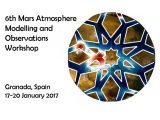
|
17/01/2017 - 20/01/2017
Mars Atmosphere Modelling and Observation Granada |

|
12/01/2017 - 12:00
Calar Alto, presente y futuro Esta charla pretende dar una visión general del estado actual del observatorio de Calar Alto mostrando los principales hitos conseguidos en los últimos años. La re-apertura de instalaciones, la concesión de nuevas ayudas del MINECO para mejoras de infraestructuras y la celebración del workshop de instrumentación en Granada, ha abierto un nuevo escenario que el observatorio va a afrontar en los próximos años. Dr. Jesús Aceituno, director de CAHA |

|
09/02/2017 - 12:30
Molecular gas and dust in low-metallicity starbursts Metal-poor, star-forming, dwarf galaxies play a fundamental role in galaxy formation and evolution, and according to LambdaCDM models may be the building blocks of most of the galaxies in the universe today. Although the interstellar medium (ISM) in such galaxies was thought to be virtually dust-free, over the last decade, observations have shown that dust can be an important constituent of even a low-metallicity ISM. However, the molecular... Dr. Leslie Hunt |

|
16/02/2017 - 12:30
Cold plasma and magnetic reconnection at the magnetopause boundary layer Magnetic reconnection is a fundamental plasma process that permits the exchange of energy and mass between colliding plasmas, e.g., between the Solar Wind and the Earth's magnetosphere. Several studies have reported the presence of cold plasma of ionospheric origin at the magnetospheric side of the magnetopause boundary layer. As a result, the particle distribution functions involved in reconnection are far from equilibrium, exhibiting a cold... Dr. Sergio Toledo Redondo |

|
02/02/2017 - 12:00
Living on the Edge: Superthin Galaxies and the Cosmic UV Background Superthin galaxies are bulgeless, late-type spiral galaxies seen edge-on. HI synthesis observations probe the kinematic structure of their interstellar medium. Observations of these isolated, quiescent galaxies have reached column densities as low as few x 1018 atoms . cm-2 . The simple structure of the superthins makes them ideal cosmological laboratories (Uson and Matthews, Astron. J. 125, 2455, 2003). I shall present the results of high-... Prof. Juan Usón |

|
31/01/2017 - 12:30
Asteroid surfaces: irradiation and VIS-IR micro-spectroscopy in the laboratory Primitive extraterrestrial materials, such as meteorites and dust collected by sample return missions, are characterized by a large compositional heterogeneity at different scales. This heterogeneity has been observed in the laboratory by different techniques. Among these, micro-IR spectroscopy has the advantage of being totally non-destructive and allowing direct comparison with astronomical observations. With the development of Focal Plan... Dr. Rosario Brunetto |

|
26/01/2017 - 12:30
Novae as Lithium factories in the Milky Way The abundance of Lithium observed in very young stellar populations is ~4 times larger than the primordial one estimated by recent Planck measurements. Since Lithium is easily destroyed in stellar interiors, the search for astrophysical sources responsible for of the observed Lithium over-abundance was a mystery for decades. In this seminar I'll discuss the recent detection of Lithium in the spectra of two slow novae, V1369 Cen and V5668 Sgr,... Dr. Luca Izzo |

|
19/01/2017 - 12:30
Witnessing the birth of a planetary nebula Planetary nebulae are one of the last stages of evolution of stars like our Sun. The beginning of photoionization, giving rise to a new planetary nebula, will certainly produce dramatic changes in the object, but this instant is difficult to observe, since it will only take a few decades. During of a long-time study of water masers in post-AGB stars and planetary nebulae, we identified an object (IRAS 15103-5754) in which we believe... Dr. Jose Francisco Gómez |

|
01/12/2016 - 12:30
History of solar activity recorded in polar ice Un equipo de investigación internacional en el que participa el conferenciante ha reconstruido la actividad magnética solar de los últimos diez mil años analizando para ello la concentración de isótopos cosmogénicos. Dr. Antonio Ferriz |

|
02/12/2016 - 12:30
Multiwavelength analysis of PBC J2333.9-2343 Nuclear activity as is observed in active galactic nuclei (AGN) might be a phase occurring in all galaxies, and this activity could be recurrent. A perfect laboratory to test these scenarios are the giant radio galaxies, since their emission can be as old as 10⁷-10⁸ years. In the present work we focus on the nucleus of PBC J2333.9-2343, which called our attention because it is a giant radio galaxy that shows different and incompatible... Dr. Lorena Hernández García |

|
24/11/2016 - 12:30
Big Data at the IAA: main ideas and how to run a real application at the IAA computation cluster A brief description of the Big Data paradigm is presented minimizing the technical details, reviewing previous work at IAA and showing a practical case demonstration. Dr. Rafael Morales |

|
17/11/2016 - 12:30
The CaII triplet in Quasars: from the accretion disk to the star formation Active galactic nuclei (AGN) show a great diversity of optical and UV emission line properties. Dynamical and physical models should be built accordingly. The presence of strong FeII emission suggested the existence of a region shielded from high energy photons, where the low ionization lines are emitted. Mary Loli Martínez Aldama |

|
10/11/2016 - 12:30
Very High Energy gamma rays from AGNs: key for AGN structure and cosmological studies The key for AGN structure and cosmological studies. Dr. Josefa Becerra |
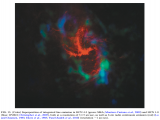
|
09/11/2016 - 12:00
Star Formation Close to and Accretion onto the Supermassive Black Hole Sgr A* The environment of Sgr A* provides a window to the close-up study of star formation under extreme physical conditions Prof. Farhad Yusef-Zadeh |

|
03/11/2016 - 12:30
A search for neutral gas outflows in nearby (U)LIRGs I will present a search for outflows in a sample of 38 local (U)LIRG systems (51 individual galaxies) observed with VIMOS/VLT and SINFONI/VLT integral field units. Dr. Sara Cazzoli |
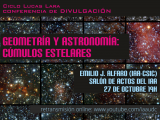
|
27/10/2016 - 19:00
Geometry and astronomy: stellar clusters Geometry and astronomy: stellar clusters Emilio J. Alfaro |

|
24/10/2016 - 12:30
RadioAstron observations in the jet in 0836+710 Space VLBI observations with RadioAstron provide an extraordinary improvement of angular resolution. Laura Vega |

|
20/10/2016 - 12:30
The Unfied Model for AGN 30 years after, and recent support for an Evolutionary Model of AGN I shall comment on the difficulties faced today by the so called "Unified Model" (UM) for AGN. Prof. Deborah Dultzin Kessler |

|
13/10/2016 - 14/10/2016
New Instrumentation and Legacy Projects for Calar Alto Granada |

|
04/10/2016 - 12:30
The VIMOS Ultra Deep Survey: galaxy formation and evolution, 13Gyr back in cosmic time The first phases of galaxy formation and evolution remain poorly understood and improved observational constraints are needed to test the theoretical picture and simulations. I will present the results from the VIMOS Ultra-Deep Survey (VUDS) Prof. Olivier Lefevre |
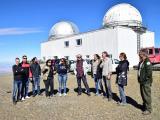
|
19/09/2016
Visit of the Delegation of Environment of the Junta de Andalucía at Sierra Nevada Observatory La visita se enmarca en un reciente acuerdo de colaboración para mejorar la calidad del cielo |

|
29/09/2016 - 12:30
Presentation of the HETH group (High Energy Transients and their Hosts) HETH (High Energy Transients and their Hosts) is one of the youngest groups at IAA, founded in 2012, and belongs to both the extragalactic and stellar department. Thanks to recent success in funding applications, both by the group and by external researchers, HETH has now grown to a group of 7 young researchers. Dr. Cristina Thöne |

|
15/09/2016 - 12:30
Proxima b: What could I say you already do not know about it? This august, we have published clear evidence of a planet orbiting the nearest star to Earth, Proxima Centauri, at a distance of 1.295 parsecs (4.2 ly) and one of the best-studied low-mass star. Dr. Pedro Amado |

|
22/09/2016 - 12:30
Delving into the gas-phase of CALIFA galaxies to trace O and N gradients CALIFA (Calar Alto Legacy Integral Field Area survey) has provided spatially resolved optical spectra of thousands of HII regions in spiral galaxies of the Local Universe whose properties can be linked with the integrated properties of the host galaxies... Dr. Enrique Pérez Montero |
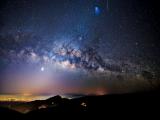
|
27/06/2016
The IAA hosts a conference on the quality of the sky The dark sky as equity or fighting light pollution constitute some of the axes of the session. The conference seeks to create a meeting place where the various actors involved in the protection of Andalusian sky will exchange knowledge, perspectives and experiences |

|
23/06/2016 - 12:30
Using the local gas-phase oxygen abundances to explore a metallicity-dependence in SNe~Ia luminosities In this talk I present an analysis of the gas-phase oxygen abundances of a sample of 28 galaxies in the local Universe (z<0.02) hosting Type Ia Supernovae (SNe Ia). The data were obtained with the 4.2m William Herschel Telescope (WHT). Manuel Moreno Raya |

|
16/06/2016 - 12:30
Space VLB interferometer RadioAstron: status and results The RadioAstron Space VLBI mission utilizes the 10-m radio telescope on-board the dedicated Spektr-R spacecraft to observe cosmic radio sources with an unprecedented angular resolution at 92, 18, 6 and 1.3 cm. Yuri Kovalev |

|
09/06/2016 - 12:30
Blazars: Order and Disorder Blazars are the most luminous persistent objects in the sky. They emit light across the entire electromagnetic spectrum, from low-energy radio waves to high-energy gamma-rays, and they exhibit variability on timescales that range from years down to minutes. The launch of the Fermi Large Area Telescope (LAT) in 2008 has ushered in a new era of high-energy astrophysics. Prof. Nicholas Macdonald |

|
02/06/2016 - 12:30
Star formation and AGN activity in the most luminous LINERs in the local universe In this talk I will focus on the most luminous LINERs in the local universe, where we studied their SF and AGN activity in order to understand the LINER phenomenon in relation to star-forming galaxies and to compare their properties with those of the LINERs at z ~ 0.3. Dr. Mirjana Povic |

|
30/05/2016 - 03/06/2016
Blazars through Sharp Multi-Wavelength Eyes Málaga |

|
25/05/2016 - 12:30
ECS: Diseño y construcción de Observatorios Astronómicos ECS es una empresa de ingeniería especializada en Observatorios Astronómicos. Realiza los pertinentes estudios y evaluaciones de calidad de cielo, logística y necesidades específicas, para ubicar y diseñar el observatorio. Francisco Ángel Espartero Briceño |

|
19/05/2016 - 12:30
The magnetic field vector in solar chromospheric structures: the diagnostic potential of the near infrared He I 1083nm triplet The solar chromosphere is permeated by solar structures such as sunspots, surges, flare ribbons, prominences (filaments) or spicules, where non-local thermodynamic equilibrium effects dominate the state of the plasma and where the magnetic fields are expected to be much lower in intensity than in the photosphere underneath. Dr. David Orozco |

|
12/05/2016 - 12:30
Sgr A* and its environment: insights from X-ray observations Almost every massive galaxy has at least one super-massive black hole (SMBH) at its center. Most (>90%) of those SMBHs are quiet. Understanding the accretion of low-luminosity SMBHs represents a very important and fundamental problem in astronomy. Dr. Daniel Wang |

|
05/05/2016 - 12:30
Formación Estelar: ¿podemos acotar el problema? Mientras que la evolución estelar conforma un cuerpo teórico bien estructurado, incluyendo aquí las últimas fases de la misma, la formación estelar está lejos de admitir una formulación teórica predictiva que permita, conociendo las propiedades físicas de la nube molecular, pergeñar las propiedades de la futura población estelar naciente. Dr. Emilio Alfaro |

|
28/04/2016 - 12:30
The lifetime dilemma of evaporating black holes The standard view is that black holes exist, maybe not with all the properties of strict black holes in classical General Relativity, but sufficiently close to them that one does not need worrying in the astrophysical practice. Dr. Carlos Barceló |

|
21/04/2016 - 12:30
Colloquium on ERC's proposals Colloquium on ERC's proposals Drs. Alejandro Luque & Rainer Schoedel |

|
18/04/2016 - 12:30
Issues in star and cluster formation The upper mass stellar initial mass function is similar to the mass function of young star clusters. I argue that this is a basic result expected when gravitational focusing on scales much larger than the Jeans length operate. I will also present recent VLBI studies of Orion which yield new distance estimates. Prof. Lee Hartmann |